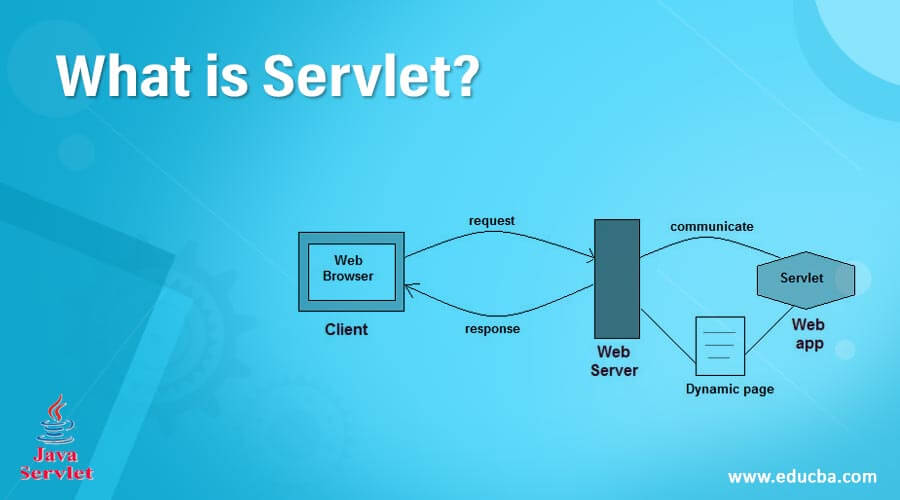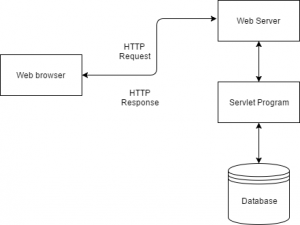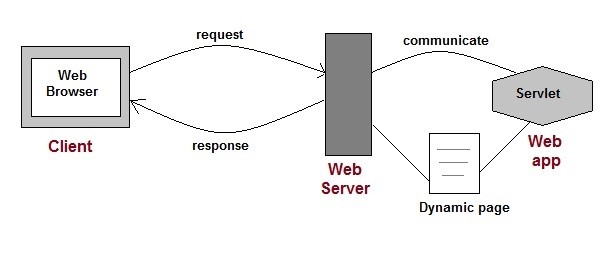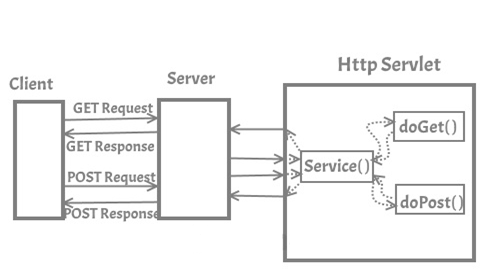Updated July 3, 2023
Introduction to Servlet
The servlet is a JAVA program that runs particularly inside JVM or {JAVA Virtual Machine} on the Web server. It is generally used to make/create Dynamic web applications and pages.
It is a technology that is used to develop Dynamic web applications. It uses the JAVA language for its work of creating web pages. This technology is secure, scalable, and robust because it uses JAVA technology which provides the same features.
Understanding
It is a small program that uses and runs on the JAVA language that extends the capabilities of a server. Developers use them to develop both static and dynamic web applications.
How does it Make Working so Easy?
As earlier, we told you that it makes our work so much easier because it uses the JAVA programming language that provides us many features like security, scalable, and robustness, making it easy to use and work over.
What Can you do With It?
We can do a lot more things with it. The main and basic thing we do with it is the development of static and dynamic web pages for web applications. This technology is very similar to CGI {Common Gateway Interface}, but due to the drawbacks of CGI, Servlet overcame it. If we talk about the difference the main difference between them is that it is efficient and portable, and data sharing is possible where it can handle the cookies, but on the other hand, CGI is not portable, and sharing data is impossible then resultant it cannot handle the cookies also. So these are the drawbacks of CGI.
Servlets API’s
It builds from two packages:
- Javax.servlet {basic}
- Javax.servlet http{advance}
Components
- Servlet
- ServletRequest
- Filter
- ServletConfig
- HttpServlet
- ServletResponse
- GenericServlet
- HttpServletRequest
Advantages
Some of the advantages are described below.
- Portable/Platform Independent: As written in JAVA, it is portable.
- Efficient and Scalable: It instantly fulfills clients’ requirements once loaded on a Web server.
- Robust: People know JAVA as robust because of its top features, such as garbage collection, exception handling, etc.
- Easy Data Sharing: Data sharing is possible and easy, which was not in CGI.
- Less Expensive: Its cost is lower in comparison to others.
- New Process: It does not use a new process every time. It removes the overhead of a new process. Therefore, it also saves memory.
Servlet Container
Its Container, the Servlet Engine, provides a very efficient run time environment for Java Servlet components. In other words, it is a system that manages the JAVA Servlet component to handle client requests.
Services provided:
- Network service
- Security service
- Session management
- Resource management
- Manage container
Life Cycle and Working of Servlet
It contains 5 steps in its Life-Cycle
Step 1: Loading.
(Whenever the server starts, the container of it deploys and loads all the servlets. During this step, it creates ServletContext Object, which is an interface to communicate easily with the container)
Step 2: Creating an Instance of Servlet.
(When all the Servlet classes are loaded, the container creates the instance for each class. The container creates only one instance for a single class and requests to the servlet executed on the same instance)
Step 3: Invoke init() method.
When all instances are created, its init() method is invoked. This method is used for the initialization. There are many init parameters that we can specify in the web.xml file.
<servlet>
<servlet-name>MyServlet</servlet-name>
<servlet-class>com.XYZ.MyServletDemo</servlet-class>
<load-on-startup>1</load-on-startup>
</servlet>Now the init method for class co.XYZ.MyServletDemo will be invoked during container startup.
Step 4: Invoke Service() method.
(Every time the server receives requests for the servlet, it gets a new thread that calls the service() method. The service() method serves the request if the servlet is generic. If it is an HttpServlet, the service() method receives the request.
Step 5: Invoke destroy() method.
(When the Container shutdown, it unloads all the servlet classes and interface and calls destroy() method for each initialized It.)
Career Growth in this Technology
The best technology for the career growth of a student interested in coding language is this, but the student should be sharp for it, and there are a lot of opportunities for him. Every company needs such types of technology and the employee with experts.
Conclusion
We use several technologies according to our needs or requirements. It is the most used technology for making web applications due to its easy-to-use interface, while other technology could also be used as its alternative. But it is best for all technology used for web applications.
Recommended Articles
This has been a guide to What is Servlet? Here we have discussed the working, components, advantages, life cycle, and career growth in servlet. You may also look at the following articles to learn more –







